im playing with python and scipy to understand windowing, i made a plot to see how windowing behave under FFT, but the result is not what i was specting.
the plot is:

the middle plots are pure FFT plot, here is where i get weird things.
Then i changed the trig. function to get leak, putting a 1 straight for the 300 first items of the array, the result:

the code:
sign_freq=80
sample_freq=3000
num=np.linspace(0,1,num=sample_freq)
i=0
#wave data:
sin=np.sin(2*pi*num*sign_freq)+np.sin(2*pi*num*sign_freq*2)
while i<1000:
sin[i]=1
i=i+1
#wave fft:
fft_sin=np.fft.fft(sin)
fft_freq_axis=np.fft.fftfreq(len(num),d=1/sample_freq)
#wave Linear Spectrum (Rms)
lin_spec=sqrt(2)*np.abs(np.fft.rfft(sin))/len(num)
lin_spec_freq_axis=np.fft.rfftfreq(len(num),d=1/sample_freq)
#window data:
hann=np.hanning(len(num))
#window fft:
fft_hann=np.fft.fft(hann)
#window fft Linear Spectrum:
wlin_spec=sqrt(2)*np.abs(np.fft.rfft(hann))/len(num)
#window + sin
wsin=hann*sin
#window + sin fft:
wsin_spec=sqrt(2)*np.abs(np.fft.rfft(wsin))/len(num)
wsin_spec_freq_axis=np.fft.rfftfreq(len(num),d=1/sample_freq)
fig=plt.figure()
ax1 = fig.add_subplot(431)
ax2 = fig.add_subplot(432)
ax3 = fig.add_subplot(433)
ax4 = fig.add_subplot(434)
ax5 = fig.add_subplot(435)
ax6 = fig.add_subplot(436)
ax7 = fig.add_subplot(413)
ax8 = fig.add_subplot(414)
ax1.plot(num,sin,'r')
ax2.plot(fft_freq_axis,abs(fft_sin),'r')
ax3.plot(lin_spec_freq_axis,lin_spec,'r')
ax4.plot(num,hann,'b')
ax5.plot(fft_freq_axis,fft_hann)
ax6.plot(lin_spec_freq_axis,wlin_spec)
ax7.plot(num,wsin,'c')
ax8.plot(wsin_spec_freq_axis,wsin_spec)
plt.show()
EDIT: as asked in the comments, i plotted the functions in dB scale, obtaining much clearer plots. Thanks a lot @SleuthEye !



